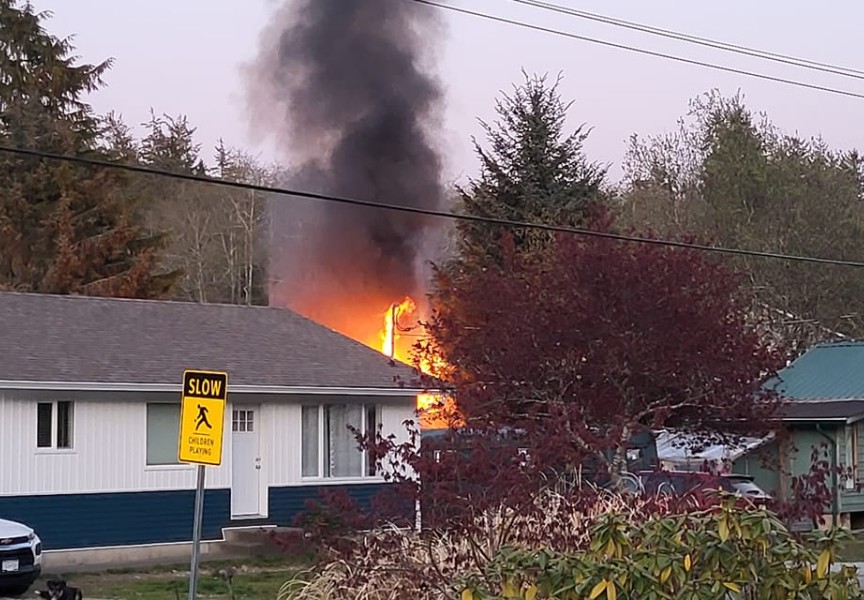A video posted this week on YouTube has a number of people speculating on what is going on in the flat ground near the mouth of the Somass River.
Local nature guide and columnist Sandy McRuer has titled it the Boiling Meadow. On the video, wherever McRuer focuses, the partially flooded field is bubbling. Noisily.
“I was out for a long walk in the rain,” McRuer said. “I thought I’d do my bird-watching thing, and I had my camera along with me. I was standing in about six inches of water, lining up a shot with a long view, and I heard what sounded like a brook babbling. I looked around and suddenly, there was bubbles coming up everywhere…”
McRuer switched to video and swept his view over the meadow, where small pockets of bubbles were bursting, mostly around clumps of vegetation.
So far, there are no explanations for whatever natural phenomenon might be taking place under the soggy ground.
“My first thought was that this was just air escaping from ground that had just been flooded,” McRuer said. The next possibility was somewhat explosive, he said.
“I didn’t think it was methane. But then again, I didn’t want to bend over with a lighter to find out.”
McRuer said it is possible that MacMillan Bloedel may have piled hog fuel on the flat ground while building its settling ponds. That decades-old organic material may still emit gas, he suggested.
First Nations Wildcrafters co-owner Keith Hunter, who worked in the oil industry in the Southwestern U.S. for many years, said he had just viewed the video, and he was equally puzzled.
“The only time I’ve ever seen something like this was methane. But I don’t know what the underground geology is under there. If there is an underground coal seam, or something like that,” he said. “That would release methane.”
Hunter said there is another possibility. This one has the potential to create serious problems, he said.
On Feb. 28, 2011, a Magnitude 6.8 earthquake struck the Puget Sound in Washington State, causing significant and immediate damage. But the Nisqually Quake, as it came to be known, set off ripple effects underground that played out for the next several years, Hunter explained.
“We were starting to see ‘sinks’ as far away as Neah Bay,” he said.
Hunter said this region has experienced small tremors over the past several years, and we could now be seeing some of the effects.
“In the substrate, there could be ground skidding, from all the rains. And as the ground starts settling down, the air starts leaking out. Sometimes that’s an indication that a sinkhole is forming: as the ground starts shifting, it starts opening up air cavities in the ground.”
Hunter said a number of huge sinkholes, the most recent in Oregon State, have captured the public attention.
On the other hand, it could just be settling in those historic hog fuel deposits in the estuary, he added.
Late this afternoon, Port Alberni city engineer Guy Cicon said he hadn’t been advised of the bubbling fields near the city sewage lagoons.
City wastewater flows by gravity down to several collection points along the shoreline on the harbour and on the estuary, then is pumped through “forcemains” across the Somass River to the sewage lagoons, where the odiferous substances are broken up, aerated, diluted and eventually rendered harmless.
“Is the happening in one particular place or is it bubbling all over?” Cicon asked.
The engineer was advised that the bubbling was occurring in a wide area.
“Good,” he said. “It doesn’t sound like a forcemain break.”
A broken forcemain would push large quantities of compressed air and other… substances up through the ground.
“If there was a break, you’d know it,” he said.






